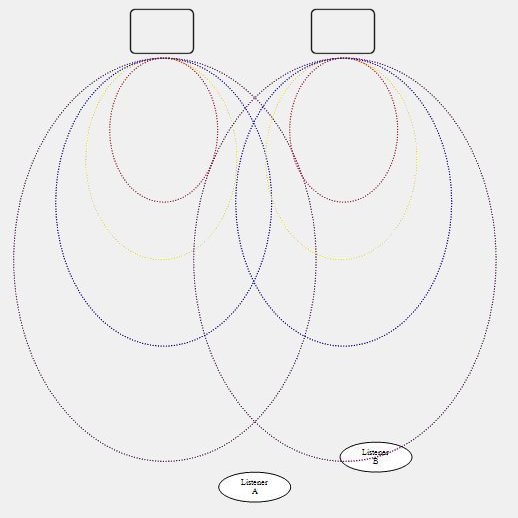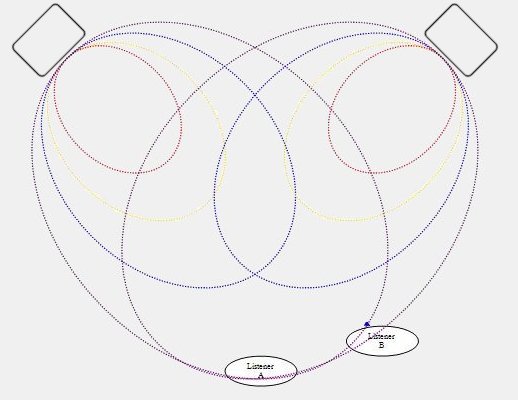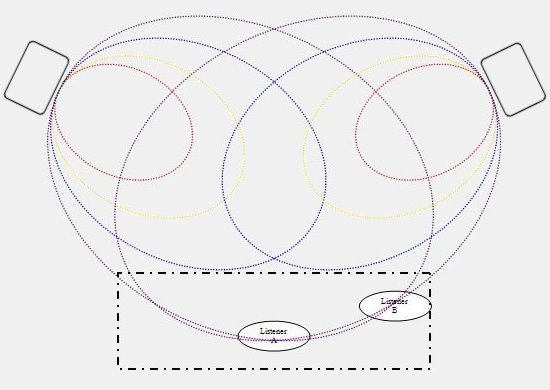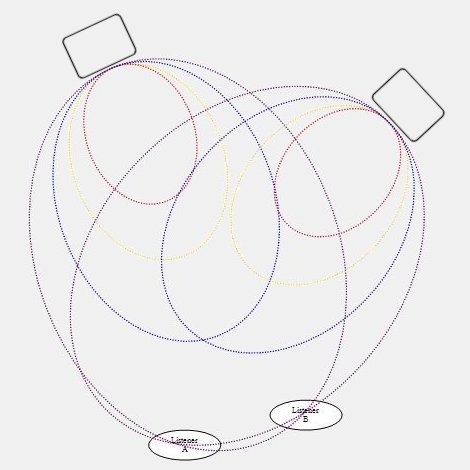

Posted by Wayne Parham [ 70.234.108.29 ] on January 02, 2009 at 16:31:12:
We've discussed uniform directivity and its benefits many times here. We've also talked about the reasons why the imaging of the π cornerhorn is good throughout a large listening area, because of the combination of its uniform directivity and the requisite orientation having its forward axis toed-in 45°. This arrangement can be employed in other speakers having uniform directivity too, and it is recommended for the three π and four π speakers as well as the cornerhorns.
This approach has gained popularity in the last few years. For a long time, we were the only ones doing it. Most directional sources that imaged well needed a pinpoint listening spot, and movement of just a few inches ruined it. The biggest examples that come to mind are planar speakers, which image like crazy if you don't move an inch. Most horns work this way too, especially the tractrix round horns. Klipschorns are designed for corner placement and have 45° toe-in, but they aren't CD. So our wide sweet spot approach of using CD speakers with the forward axis crossed wasn't popular for many years, but it is becoming more and more popular these days.
One enthusiast that posts under the pseudonym publius took time to illustrate the orientation and the pattern that results. It occured to me that this was definitely a case where a "picture is worth a thousand words". I immediately asked if he would mind if I used his illustrations when describing this placement strategy. He agreed, and I've included much of his accompanying description below.
Parham, and later Geddes as well as many others have suggested that the listening sweet spot can be widened by aiming the speakers to a point in front of a centrally located listener (the traditional sweet spot). Since the benefits of having a wide sweet spot are numerous and include allowing multiple people in the same room to share the full experience at the same time to not needing a center channel in order to locate sound accurately on the center of the screen for home theater, I have put together a few drawings that attempt to provide a guide for folks who might not understand how this works.
We have previously identified three requirements for good imaging. the sound from each speaker must arrive with the same:
1. Frequency Response
2. SPL
3. Time Arrival
True controlled directivity horns do a pretty good job of minimizing reflections and providing a nice consistent frequency response off-axis from about 1kHz up (the frequencies where imaging cues are particularly important) so go a long way toward achieving the first requirement.
Small differences in time arrival between the two speakers for a listener who is sitting off-axis may not be an issue because of the haas effect--the effect where sounds that arrive within about 15ms are combined by our brains into a single sound if they are the same in frequency response and to a lesser extent SPL.
With the two other effects considered, the imaging game comes down to having the sound from the controlled directivity horns arrive at all listeners at the same SPL.
This first diagram shows the radiated sound power from two forward firing speakers. Each oval represents declining sound power and it can be seen that it falls faster off-axis than on-axis.

Listener A, the one centrally located, will have equal sound power arriving from each speaker and thus good imaging. Listener B however receives a higher level of sound power from the speaker on the right (the one located in front of him). Thus Listener B will not enjoy the system's best imaging potential.
See what happens when the speakers are toed inward so the forward axis are crossed:

In this arrangement, each speaker is toed in about 45°. The sound power for Listener A and Listener B is almost identical, so both listeners will be able to share the system's full imaging potential.

This arrangement has the speakers moved a little bit closer to the listeners and toed-in further in order to maximize the sweet spot in rooms with shallow rear-wall depth. The dotted black represents the region where listeners will all receive about identical SPL and so will have good imaging.

Finally, another arrangement that can solve situations where speakers must be placed in unusual locations or in order to move the sweet spot around the room to accomodate as many listeners as possible.
The important thing to know is that this strategy only works for speakers with uniform directivity, that have off-axis sound that is spectrally similar to the on-axis sound. With a little bit of experimentation in placement, the sweet spot can be widened or, with asymmetric placement of the speakers, the sweet spot can even be moved around in the room.
These drawings are not to scale and are meant only to serve as inspiration for experimentation in placement.
[ PiSpeakers Forum ] [ Help ]